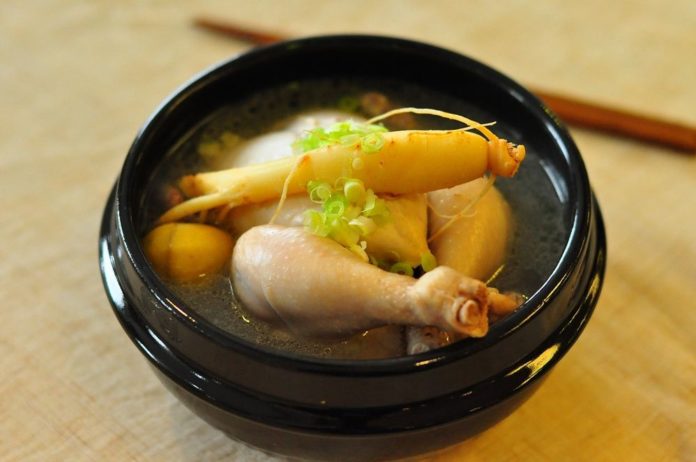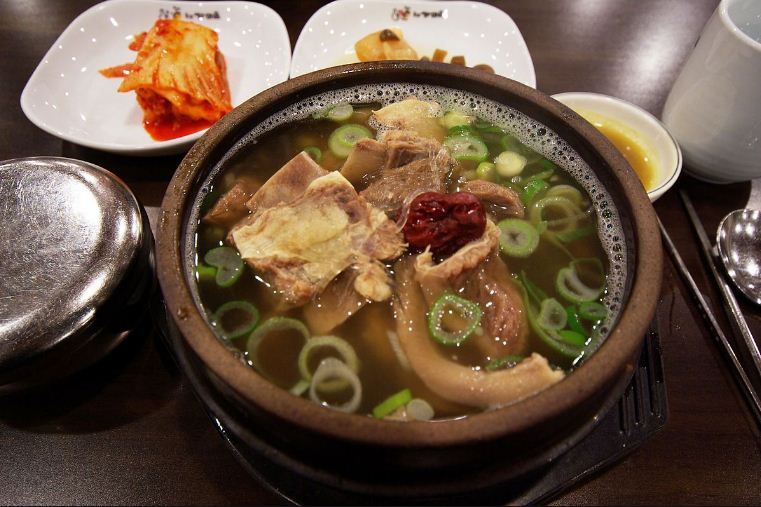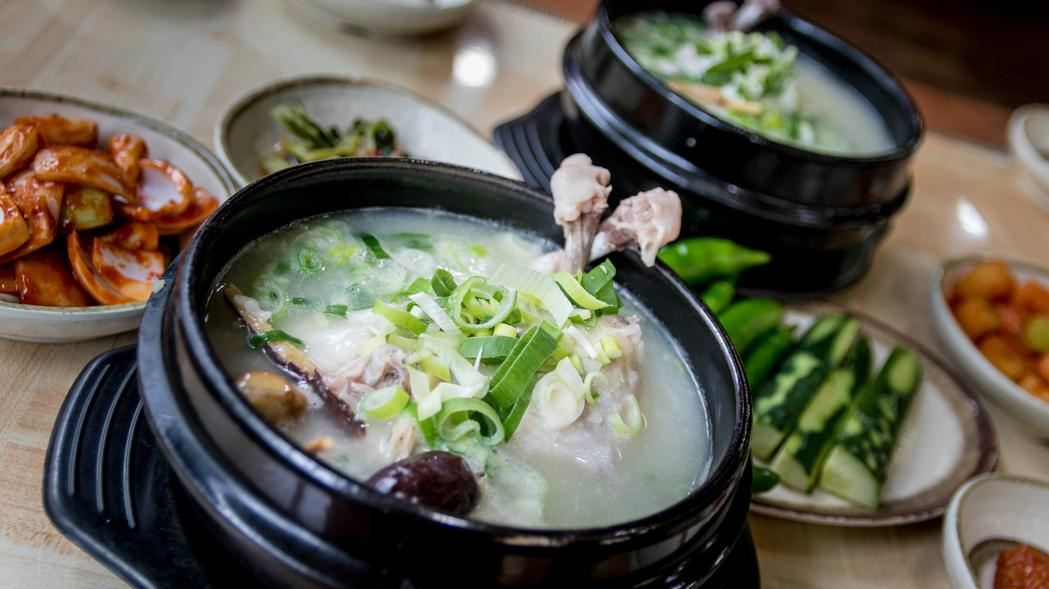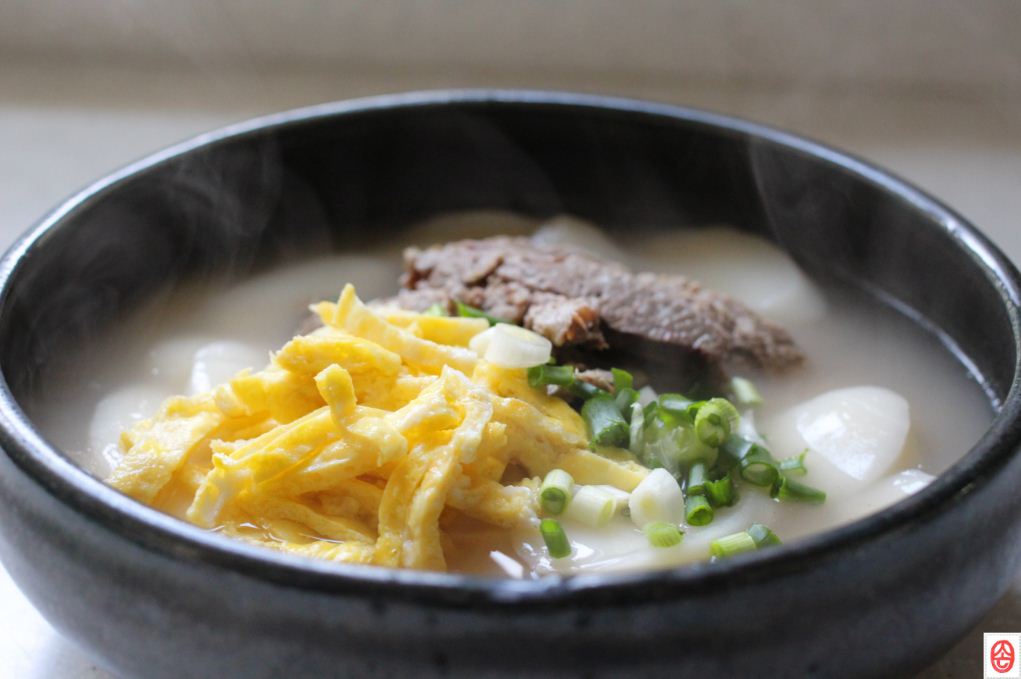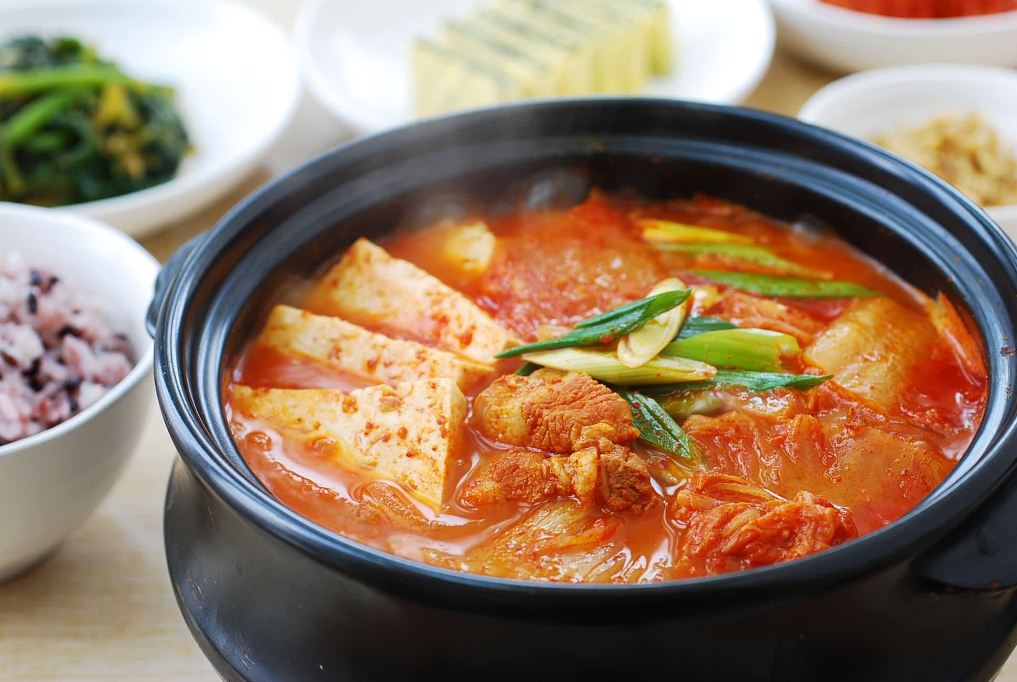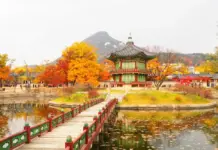Once reminding of Korean food, diners will think of steamed, fried and grilled dishes, which are favorite delicacies of Korean people. However, in a traditional meal of Korean people, the soup (broth) is always presented to serve with rice. Let’s discover 5 typical types of Korean soups you which you should try when traveling to South Korea.
- What to eat in Korea: 15 Most popular & must try food in South Korea
- Must-eat in Seoul. 29+ most famous & best street foods in Seoul
- What to eat in Seoul blog — 9 must-eat foods in Seoul & best places to eat them
- Korean must eat food — Top 14 food you must eat in South Korea
- Must eat street food in Korea — Top 5 Korean street foods you must try
Galbitang (Beef short ribs soup or Beef ribs broth)
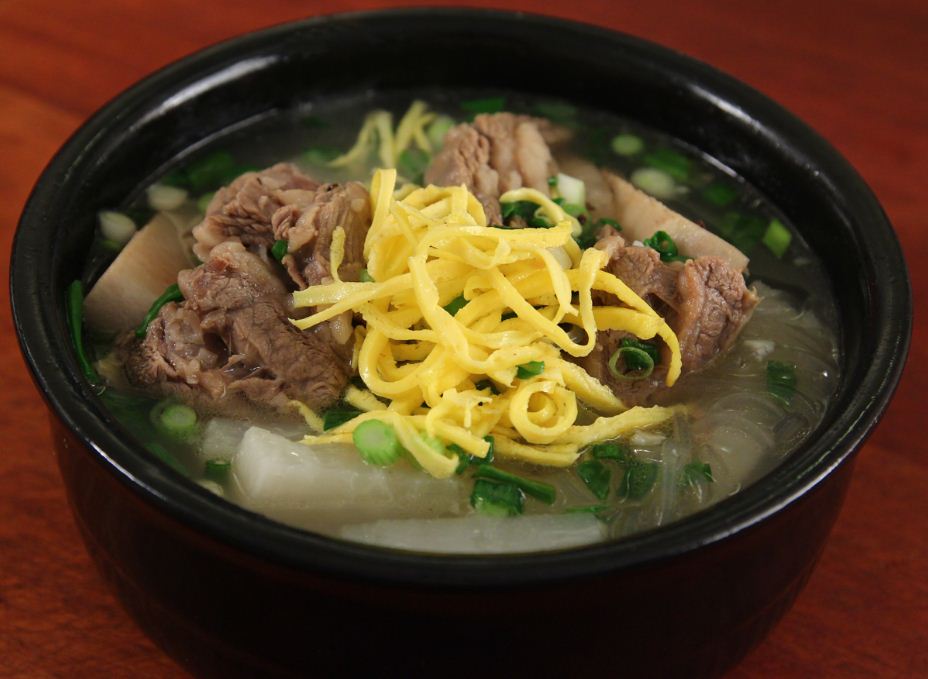
With the well-cooked beef ribs, the broth is aromatic and fatty. To cook this dish, the cook will cut the ribs into pieces of 5cm each, soak in the water in some hourse, boil pieces of ribs and then cook in 2.5 hours more. The bone will be taken out while the broth is added with vegetable bulbs, onion and garlic before adding spices, soya sauce, beef powder to make the dish more delicious. Finally, add the bone, dry apples, ginseng, vermicelli and chopped baro onion.
The highlight of the dish is the fatty and scrumptious taste of the broth, crispy flavor of vegetables, the bitterness of ginseng and the sweetness of dry apples. Cooked with spices, onion and hot chilli, the beef rib broth will be more mouthwatering when being put in the stone bowl. Enjoying Galbitang in early spring with your family and friends will be a memorable experience.
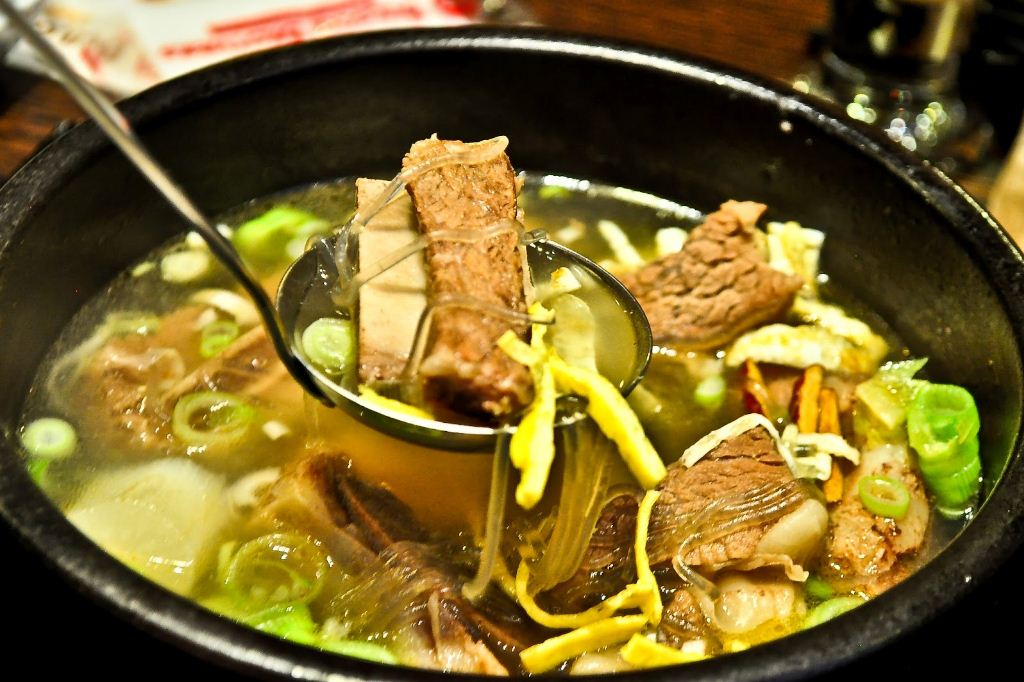
Samgyetang (Braised chicken with ginseng)

Samgyetang is one of the most famous dishes in Korea in summer. However, let’s try a hot bowl of Samgyetang in the cold weather to energize yourself. The chicken is soft and sweet with the broth of glutinous rice, ginseng, dry apple and chestnut to warm you up. To increase your taste, the cook also adds some shallots, salt and black pepper into the broth. The Samgyetang with the savors of glutinous rice, ginseng and dry apples will wake up all of your taste buds and strengthen yourself in the new year.

Sagol Tteokguk (Rice cake soup or Rice cake broth)
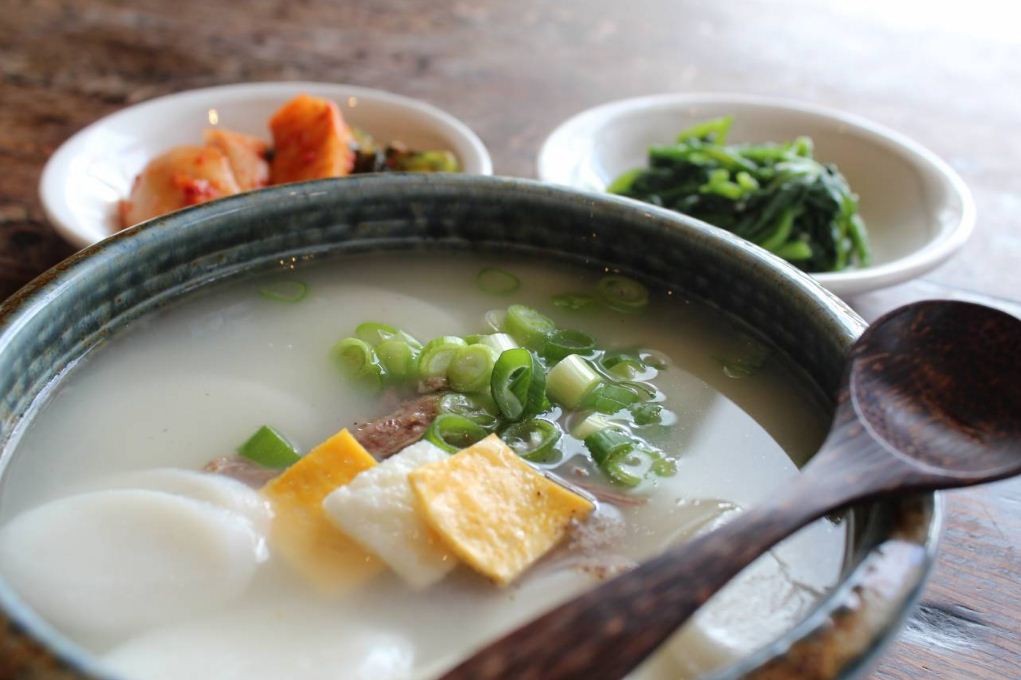
If Tteok is regarded the “soul” of Korean traditional meal on Tet holiday, rice cake broth is believed to bring them the strength and good luck in the new year. Sagol Tteokguk is cooked from sliced rice cake and beef broth. It is rather sophisticated to cook the broth. The cook will cut the beef bone of 5-7cm, soak in the water in a day, boil, rewash them and then cook in two days. After that, the rice cake will be added and cooked within about five minutes with beef powder, salt, garlic, soya sauce and pepper. The aroma and sweetness of the broth mixed with the flavors of garlic and hot chilli creates a distinctive taste. The white color of the rice cake embellishes for a little chopped beef, some yellow slices of fried egg and spring onions as a gentle symphony.
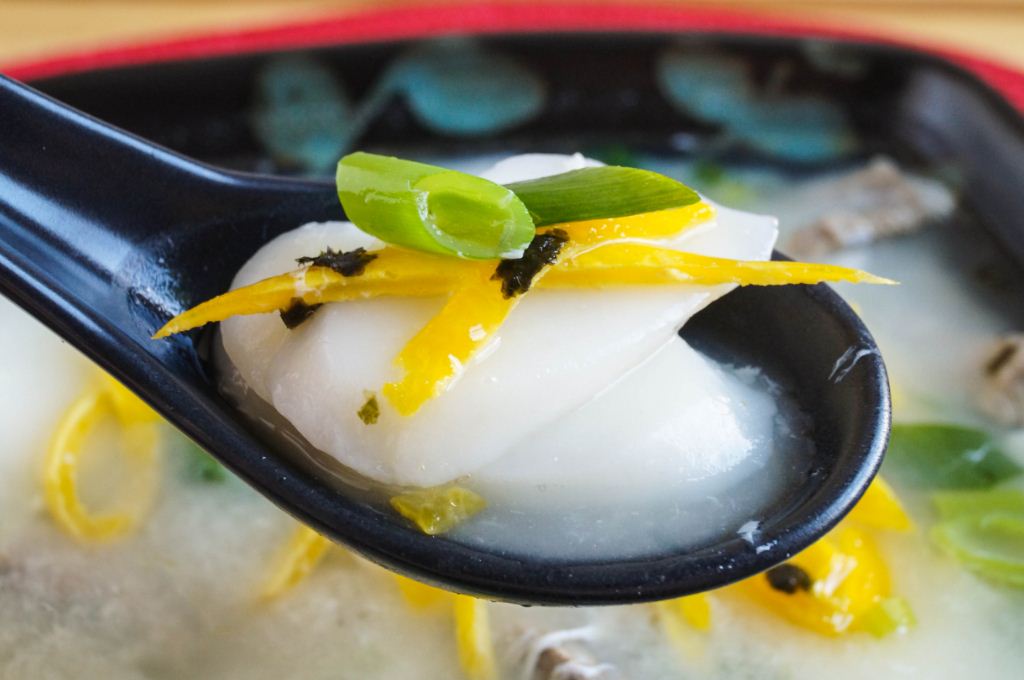
Kimchi Jeongol (Kimchi Soup or Kimchi broth)
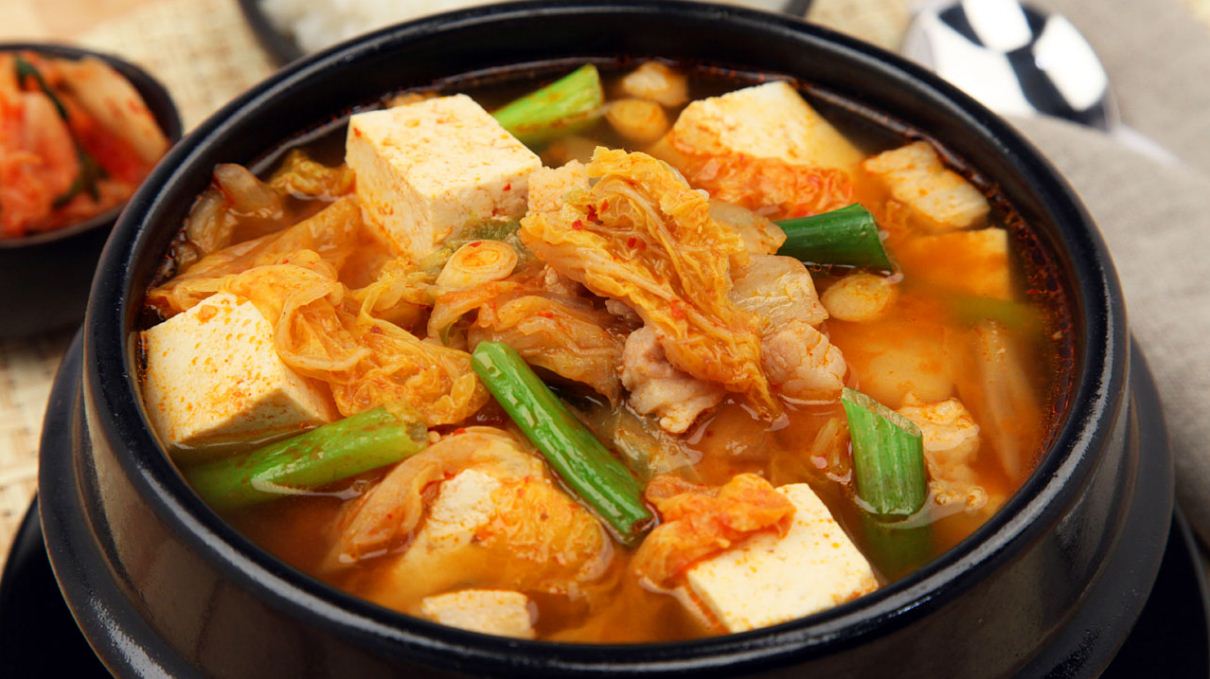
The land of Kimchi, which is called for Korea, is a perfect proof for an original dish in Korean cuisine. With the fragrant and hot flavors, Kimchi Jeongol is the best dish for balancing your nutrition and keeping your body warm.
To cook this dish, sour kimchi is stir-fried with pork, spices, beef powder and garlic. To make the broth, the chef will cook vegetables, onion and garlic within 30 minutes, and then add more spices and beef powder to make the broth more delicious. Add ginseng and dry apple to the ribs, along with vermicelli and baro onion. Finally, when all ingredients are well-cooked, sliced tofu will be put in and served hot.
Kimchi Jeongol is hot, sweet, sour and aromatic. This dish with many flavors will be a tasty dish in cold days.

Doenjang Jeongol (Korean sweet soya sauce broth)
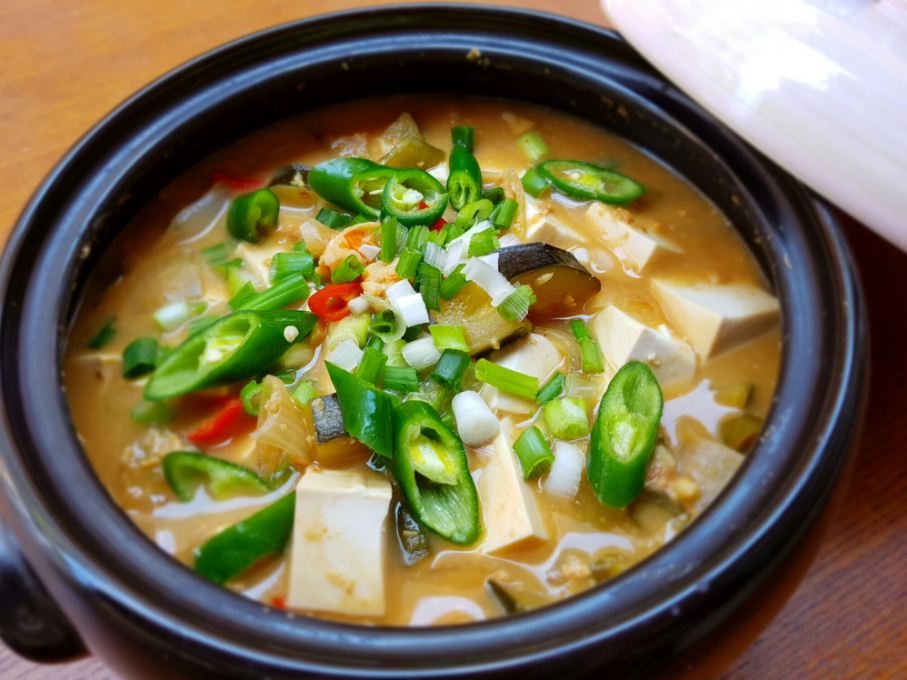
As an appetizing dish with nutritious ingredients, Doenjang Jeongol is a wonderful choice for your meals.
To make the broth, ingredients, including beets, onion, garlic, baro onion and anchovy will be cooked in about one hour, and then fish out these ingredients. After that, add sweet soya sauce, spices, beef powder, chilli powder and fish powder. Then, corn, onion, baro onion, green capsicum, mushroom, oyster and tofu will be cooked in the broth. To increase the taste for the dish, the cook often uses jjang sauce, made of fermented bean with salt. After enjoying a barbecue with sochu wine, it is the best time to enjoy a bowl of hot Doenjang Jeongol to feel the warmth in the spring.
After the party, you can drink a cup of fragrant cinnamon tea to balance the tastes and nutritions for your body.
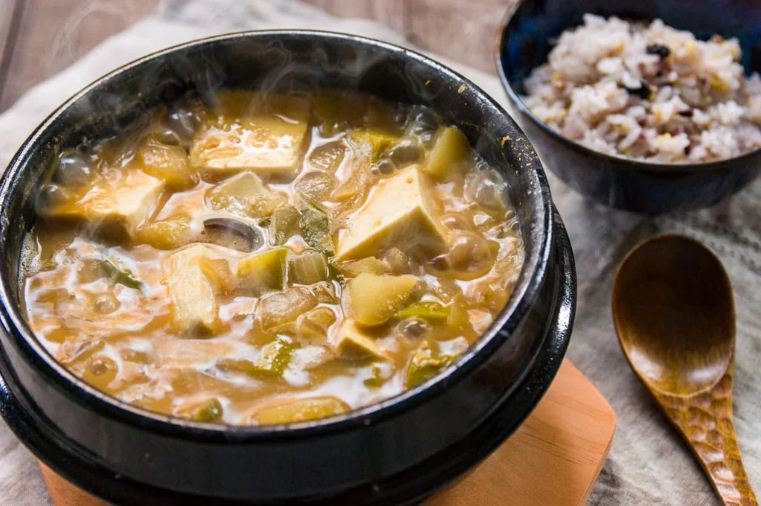
If you traveling to Hanoi, you can drop by these restaurants for enjoying these dishes:
Biwon Korean Restaurant
9th floor, Keangnam Landmark Tower 72,
Pham Hung street, Hanoi
Tel: 04. 6282 3300.
Arirang Restaurant
3rd floor, Grand Plaza Hanoi Hotel – 117
Tran Duy Hung, Hanoi
Tel: 04. 3555 1000 – ext.2030.
































![10 best airports in Asia in 2016 [RANKED] kuala-lumpur-international-airport-best airports in asia in 2016 by skytrax ratings](https://livingnomads.com/wp-content/uploads/2016/08/29/kuala-lumpur-international-airport-best-airports-in-asia-in-2016-by-skytrax-ratings-218x150.jpg)








